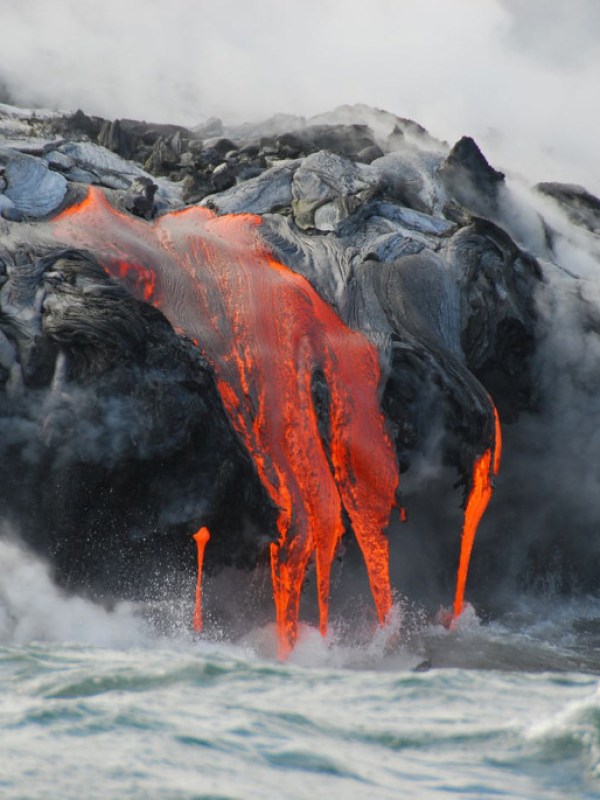How was this unique shoal created? Geological history will tell us!
Molokini Crater – a small crescent of land 2/5 of a mile long, extends 310 feet underwater and 160 feet above the surface, and was formed in the midst of volcanic eruptions in the Maui Nui Basin. As the Pacific plate passed over Earth’s hot spot and created Haleakala’s southwest rift zone, hot lava erupted under cool water, creating steam explosions that added to the force of the eruptions. The steam broke apart the lava just released, making room for even more to flow upward into the Pacific. Ocean and new land combined to make geological history, and Molokini Crater was born. (For the birth of Molokini in Hawaiian legend, check out our Oral History page!)
Because this particular lava flow occurred underwater, it cooled very quickly – before crystals had time to form – so a lot of it turned into volcanic glass. Volcanic glass breaks down into a dark yellow clay, and that is why Molokini is shaded very differently from the reddish volcanic cinder cones you’ll find on land. At its height, Molokini’s peak may have been 500 feet above sea level. Years of rain and wind have eroded the rim. Once the north rim “sank” below sea level, the ocean streamed into the crater. In time, a coral reef grew within.
The south rim of Molokini remains above sea level, and the open ocean side (also known as the back side) of it is a spectacular site to scuba dive. The erosion of rain and wind have allowed birds to carve out seats in the cliff, so this is also a great place for bird watchers!
The joint scientific studies of Yoshimoto Nishimitsu – then a graduate student at Kyoto University – and scientists at the Hawaiian Volcano Observatory estimated the crater’s age at 230,000 years old.

